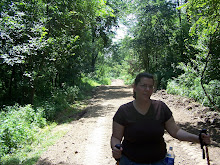I'm not sure when I became fascinated with naval history but it is something that I have grown more and more interested as I get older. As a child I always wanted to be a pirate and I think that started my interest in ships and navigation and the ocean. And when I finally learned that pirates still existed (and I could still join their ranks) I realized that it was the tall sailing ships and the unknown ocean that had really enchanted me. I didn't really want to be a pirate... I just wanted to sail.
So when I spotted the book Longitude by Dava Sobel at Waldens I had to pick it up. This enchanting but concise book tells about the world's struggle to try to determine longitudes. I hadn't even realized that this had been an issue in the early naval days. But this was the equivalent of our modern struggle to find a cure for cancer. It seemed an impossibility. And this was a costly issue. Many a ship ran aground because they couldn't tell how close they were to shore. Many ships wandered for days without land because they didn't know exactly where they were. Anyone could determine latitude by the position of the sun but longitude escaped them. Lunar charts were tried but those only work with a lot of calculations and on clear days. Clocks weren't accurate enough. One group even suggested having ships anchor out at varying distances across the ocean to sound a cannon at noon each day. And one terrible theory suggested using wounded dogs to tell time. Yeah they were desperate.
Some of the greatest minds of the day worked on the longitude problem as it was called. Galileo and Sir Isaac Newton worked on the problem off and on for decades. Edmond Halley, the astronomer royal who the comet is named after, worked feverishly all his life to find a solution. Captain Cook and Captain William Bligh were some of the first to test out possible solutions.
Until John Harrison invented a clock that kept accurate time. Up until then a clock could lose as many as 15 to 30 minutes a day. And those old clocks were subject to weather. In warmer temps they ran faster, in colder temps slower. So Harrison, a self-taught clockmaker, built the first chronometer, and was eventually awarded the prize for solving longitude. That was quite a personal fight but the thing that impresses me is Harrison's clocks themselves. The starts out with this one, which he calls H1.

As you can tell this is a big clock. It weighed over 80 pounds. Not very portable. By the time Harrison created H4, his fourth attempt the clock looked like this. Much better.
These are beautiful clocks with amazing mechanisms. I am just in awe of the work that has been done and the sheer beauty of them. All of these, except H4, have been refurbished and are still running. They have frictionless gears so that they can run smoothly. H4 has a majority of its parts made from diamonds. When people say they don't make them like this anymore this is what they are talking about. It took Harrison almost 20 years to build H3 and he build H5 in only two years. But for our mass-produced society that is an amazingly long time. But I have to wonder if there is still a place for works of art like this.
The pirate in me is enchanted with these things. I am fascinated by the puzzle of longitude since for me latitude and longitude are simple. The GPS device in my phone gives me accurate lat and long up to a couple inches. I have to wonder what Harrison and the Board of Longitude would have thought of that. Still there had to be something to sailing into the unknown with just a sextant and a chronometer to point the way.



No comments:
Post a Comment